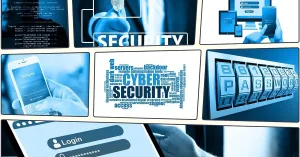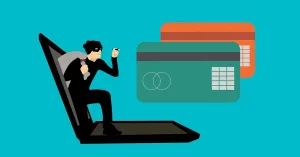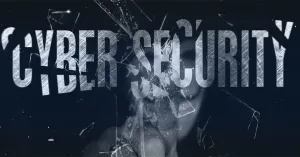The security of your online business is crucial, more so now than ever. The advancements in online technology are coming fast and furious. That's a great thing most of the time, except for the fact that scammers are also thrilled about the advances, as it gives them even more opportunities to hack into people's web spaces. Cybercriminals are particularly fond of online businesses, for it is there that they try to find ways to steal the financial information of not only you, the small business owner but your customers!
To help you keep your small business secure and safe from hackers online, the Rules of Thumb blog from MoneyThumb would like to offer the following cybersecurity tips from the Federal Communications Commission:
10 Cyber Security Tips for Small Business
Broadband and information technology are powerful factors in small businesses reaching new markets and increasing productivity and efficiency. However, businesses need a cybersecurity strategy to protect their own business, their customers, and their data from growing cybersecurity threats.
1. Train employees in security principles
Establish basic security practices and policies for employees, such as requiring strong passwords, and establish appropriate Internet use guidelines that detail penalties for violating company cybersecurity policies. Establish rules of behavior describing how to handle and protect customer information and other vital data.
2. Protect information, computers, and networks from cyber attacks
Keep clean machines: having the latest security software, web browser, and operating system are the best defenses against viruses, malware, and other online threats. Set antivirus software to run a scan after each update. Install other key software updates as soon as they are available.
3. Provide firewall security for your Internet connection
A firewall is a set of related programs that prevent outsiders from accessing data on a private network. Make sure the operating system's firewall is enabled or install free firewall software available online. If employees work from home, ensure that their home system(s) are protected by a firewall.
4. Create a mobile device action plan
Mobile devices can create significant security and management challenges, especially if they hold confidential information or can access the corporate network. Require users to password-protect their devices, encrypt their data, and install security apps to prevent criminals from stealing information while the phone is on public networks. Be sure to set reporting procedures for lost or stolen equipment.
5. Make backup copies of important business data and information
Regularly backup the data on all computers. Critical data includes word processing documents, electronic spreadsheets, databases, financial files, human resources files, and accounts receivable/payable files. Backup data automatically if possible, or at least weekly, and store the copies either offsite or in the cloud.
6. Control physical access to your computers and create user accounts for each employee
Prevent access or use of business computers by unauthorized individuals. Laptops can be particularly easy targets for theft or can be lost, so lock them up when unattended. Make sure a separate user account is created for each employee and requires strong passwords. Administrative privileges should only be given to trusted IT staff and key personnel.
7. Secure your Wi-Fi networks
If you have a Wi-Fi network for your workplace, make sure it is secure, encrypted, and hidden. To hide your Wi-Fi network, set up your wireless access point or router, so it does not broadcast the network name, known as the Service Set Identifier (SSID). Password protects access to the router.
8. Employ best practices on payment cards
Work with banks or processors to ensure the most trusted and validated tools and anti-fraud services are being used. You may also have additional security obligations pursuant to agreements with your bank or processor. Isolate payment systems from other, less secure programs and don't use the same computer to process payments and surf the Internet.
9. Limit employee access to data and information, limit authority to install software
Do not provide any employee access to all data systems. Employees should only be given access to the specific data systems that they need for their jobs, and should not be able to install any software without permission.
10. Passwords and authentication
Require employees to use unique passwords and change passwords every three months. Consider implementing multi-factor authentication that requires additional information beyond a password to gain entry. Check with your vendors that handle sensitive data, especially financial institutions, to see if they offer multi-factor authentication for your account.
Cybersecurity Resources for Small Businesses
- Global Cyber Alliance's (GCA) cybersecurity toolkit for small businesses with free cybersecurity resources
- What Small Business Owners Need to Know About Cybersecurity, Entrepreneur Magazine
- 3 Biggest Cybersecurity Threats Facing Small Businesses Right Now, Entrepreneur Magazine
- Free training materials, security configuration guides from Internet Security Alliance
- Symantec Security Solutions for Small Business
- McAfee Security Solutions for Small Business
- Microsoft Cybersecurity Tips and Technology for Small Businesses
- Small Business Solutions from StopBadware
- U.S. Chamber of Commerce Internet Security Essentials for Businesses 2.0
- FICO and U.S. Chamber of Commerce Assessment of Cyber Security Risk Report
- FICO Cyber Risk Assessment Score
- "Small Business Big Threat" from the Michigan Small Business Development Corporation





















Add comment